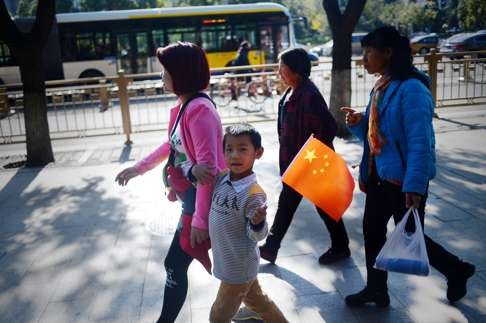Fewer women in the workforce will cost the global economy US$28 trillion over next 10 years

You can always rely on McKinsey for heart-stopping data, but few could be more shocking that the recent estimate that you would add US$28 trillion to global GDP by 2025 if women’s participation in the workforce were lifted globally to match the participation rate of men.
For a journalist in search of a sensational story, this is what you would call a number that is too good to check. When you get up in the trillions, my brain begins to blur, and an odd trillion dollar error here or there seems to make not a lot of difference. But this is McKinsey after all, and you know a lot of smart people have put a lot of effort into getting the numbers right. But a trillion or two either way still leaves us with the same conclusion: we would all be very much better off if women were able to participate in the labour force at the same level as men.
Worldwide, the labour force participation rate for men is around 77 per cent, says McKinsey. This compares with 50 per cent for women. Eliminate the gap, and you get the US$28 trillion boost to the world economy.
Acknowledging that this ambition might be a bit of a stretch, McKinsey then breaks the world into regions, and takes the country in each region with the narrowest gap between men and women in the workforce. They then ask how much better off we would be by 2025 if every country in each region matched the performance of the country in the region with the narrowest gap. The answer is still a stunning US$12 trillion – or 11 per cent of GDP. They say China’s GDP would be US$2.5 trillion bigger, and North America’s up US$3.1 trillion. South East Asia’s economies would in aggregate by US$900 billion richer.
In Peru this week, officials and experts from the APEC economies have been wrestling with these numbers, trying to get to the heart of why so many women fall out of the workforce, and looking at changes that might capture some of that “lost” US$12 trillion. Led by the US, they have created a “Healthy Women, Healthy Economies Policy Toolkit”* intended for policymakers and for company executives who want to discover what they are doing wrong, and what they can do to improve women’s participation in the workplace.
Of course some of the barriers to women staying in work are cultural, religious and traditional and will not be tackled easily. Many cultures see a woman’s role mainly as the bearer of children and focused on the home. I was shocked three years ago to visit Korea’s famous all-female Ewha University. HTC’s Cher Wang and Magsaysay Group’s Doris Ho, two of Asia’s leading women business leaders, were speaking to a group of two hundred female business administration students. Cher Wang led off by saying she had always been a passionate entrepreneur, and asked for a show of hands on who would like to start their own company. Astonishingly, just three hands went up. Here were some of Korea’s brightest and best women students, studying MBAs, and the horrible reality was that most aspired to join big-name companies like Samsung or Hyundai, and most did not expect to work once they married. Ewha seemed to be an elite finishing school.
While such barriers will take years to break down, some others arise out of ignorance, or have been invisible, and might be more easily tackled. That is particularly true about women’s health. Childbearing and the monthly menstrual cycle debilitate many women physically, and few employers have ever acknowledged this by developing women’s health programmes that helped them cope. In part because of monthly periods, many more women suffer anemia than men – 524 million worldwide, compared with 260 million men. Anemia is hugely debilitating and hits productivity hard – the estimated cost is more than US$100 billion a year.
Women are also debilitated by thyroid problems almost 10 times more often than men, and suffer much more frequently from multiple schlerosis. Women suffer as many heart attacks as men, but in part because they tend to have less medical insurance cover those heart attacks are fatal much more often.

Many leading global companies like Merck and Deloitte (who were speaking at the Apec meetings) offer inspiring examples of how productivity can be boosted, women’s participation in senior management strengthened, and career loyalty enhanced, but the uncomfortable reality is that these are still exceptions that prove a prevailingly depressing rule. And as big companies they are better placed to put supportive policies in place than the millions of small companies operating across the Asia Pacific.
Sitting in the workshop in Lima last week, I could not help feeling that women in Hong Kong face significantly less extreme challenges than their counterparts in many countries in the region. I sense that domestic violence is not as prevalent in Hong Kong as in many of the region’s economies. And ready access to home helpers allows women to stay at work without neglecting kids or ageing parents at home. I am sure the health, productivity and success of the city’s economy is due in large part to the health and participation of the women in it.
David Dodwell is executive director of the Hong Kong-Apec Trade Policy Group.
*The “Healthy Women, Healthy Economies Policy Toolkit” was created by the US-Apec Technical Assistance to Advance Regional Integration Project (US-ATAARI)